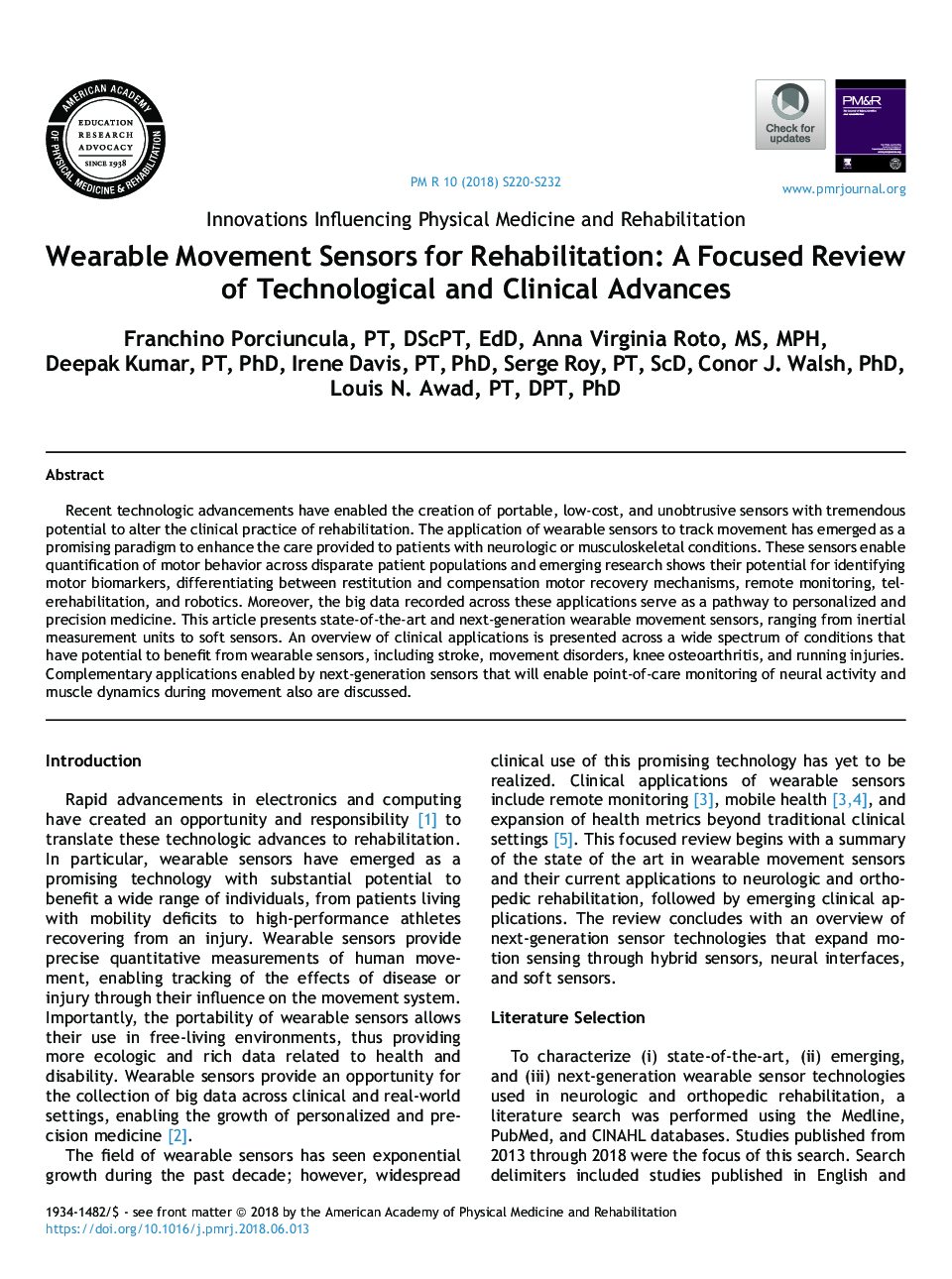| Article ID | Journal | Published Year | Pages | File Type |
|---|---|---|---|---|
| 11019209 | PM&R | 2018 | 13 Pages |
Abstract
Recent technologic advancements have enabled the creation of portable, low-cost, and unobtrusive sensors with tremendous potential to alter the clinical practice of rehabilitation. The application of wearable sensors to track movement has emerged as a promising paradigm to enhance the care provided to patients with neurologic or musculoskeletal conditions. These sensors enable quantification of motor behavior across disparate patient populations and emerging research shows their potential for identifying motor biomarkers, differentiating between restitution and compensation motor recovery mechanisms, remote monitoring, telerehabilitation, and robotics. Moreover, the big data recorded across these applications serve as a pathway to personalized and precision medicine. This article presents state-of-the-art and next-generation wearable movement sensors, ranging from inertial measurement units to soft sensors. An overview of clinical applications is presented across a wide spectrum of conditions that have potential to benefit from wearable sensors, including stroke, movement disorders, knee osteoarthritis, and running injuries. Complementary applications enabled by next-generation sensors that will enable point-of-care monitoring of neural activity and muscle dynamics during movement also are discussed.
Related Topics
Health Sciences
Medicine and Dentistry
Orthopedics, Sports Medicine and Rehabilitation
Authors
Franchino PT, DScPT, EdD, Anna Virginia MS, MPH, Deepak PT, PhD, Irene PT, PhD, Serge PT, ScD, Conor J. PhD, Louis N. PT, DPT, PhD,
